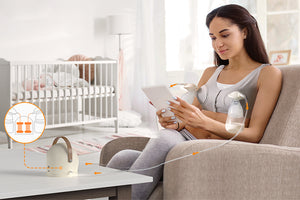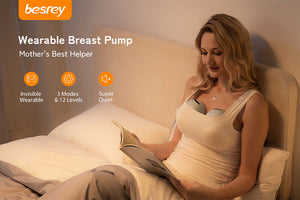If you’re a new mother, chances are you need an electronic breast pump. There are so many options on the market and it can be overwhelming trying to choose the right one for your needs. Whether you have insurance coverage or not, there is something out there for everyone.
If you have insurance coverage, there may be some electric pumps available through the Medicare system. These pumps usually provide excellent quality but with a relatively low cost. If you don’t have insurance, there are still plenty of electric pumps available for purchase at reasonable prices.
In addition to standard electric pumps, some traditional manual pumps can also be found. While these are usually more affordable, they do require a bit more effort when in use. Furthermore, many manual pumps are relatively bulky which makes them harder to carry around if needed.
For mothers who need to work while taking care of their baby, portable breast pumps may be a better option as they don’t require a lot of space or power sources like an electric pump would. Portable pumps are perfect for times when you’re away from home or in between appointments.
An electronic breast pump is incredibly easy to use and offers the utmost convenience. Its design mimics the motion of hand-expressing milk – which allows mothers to manually stimulate milk flow – in order to help extract milk from the breast. Furthermore, this process happens quickly and can be done while multi-tasking around the house! This also allows mothers who are working outside of the home to make sure their baby still receives enough nutrition during work hours.
An electronic breast pump doesn’t just offer benefits to mothers though; it can be an excellent family helper as well. For instance, if you need someone else to take over the responsibility of feeding your baby from time-to-time, having pre-made bottles of breast milk stored away can come in handy. Additionally, those late night feeds don’t have to wait for you – anyone in your household can do it for you so that everyone can get a full night’s rest!
Shopping for an electronic breast pump doesn’t have to be hard - just make sure to pick one that suits your needs and lifestyle!
As a breastfeeding mother, you may wonder about the length of time that it is safe to pump and if higher suction is better for pumping. Breastfeeding is an incredibly important part of a child’s life, so ensuring that it is done in the best way possible is essential.
This article will answer your questions and give you tips on how to ensure the healthiest pumping experience.
How long is it safe to pump in every session?
To protect your nipples from tearing or injury, we suggest limiting each pumping session to no longer than 60 minutes. If you want to increase the amount of breast milk that you are able to express during each pumping session, we recommend increasing the frequency instead and keeping each session within 20 minutes as recommended by your product’s manufacturer.
Is higher suction better for pumping?
The let-down reflex is what triggers the flow of milk when a baby nurses, and stimulation from massage, mode and expression mode helps encourage this response. It’s important to adjust the suction level according to your comfortableness and effectiveness; setting too high a level can be uncomfortable or cause irritation.
Do breast pumps lose suction over time?
In some cases, pumps may lose suction as a result of your body adapting to them over time - however if you feel that your pump’s performance has decreased significantly it could be due to improper use or maintenance. Make sure not to immerse any motor parts in water when cleaning, but instead wipe with a cloth or other cleaning product suitable for electrical appliances.
Overall, while these questions can seem daunting they are essential in understanding how best to care for both yourself and your baby during breastfeeding sessions. Always keep an eye on the length of each session and make sure that the suction level isn’t set too high so as not to cause irritation. Taking these steps should help ensure a safe and healthy experience with each feeding session!
Are Higher Suction Levels Better For Pumping?
As a new mom, you may be wondering what the best suction level is for pumping. The answer to this question depends on your personal preferences and comfort level. The let-down reflex is what causes milk to flow, and when your baby sucks at the breast, tiny nerves are stimulated which helps make the milk. Depending on how comfortable you are and the effectiveness of the suction, you can adjust the suction level accordingly.
Another thing to consider is how to clean and sterilize your breast pump model S21.
Cleaning it regularly with warm water and dish soap after each use is important to avoid fat deposits from forming. We also do not recommend placing your pump in the dishwasher or exposing it to high temperatures for more than 5 minutes. When it comes to sterilizing S21, soaking it in hot water (for no more than 5 minutes) will work great. However, since this product uses Silicone material which is Eco-Friendly, Non-Toxic and Plastic-Free for babies – keep in mind that it can discolor when exposed to UV rays. Although it won’t affect its function, there will be a visible color change so try not to use UV disinfection.
In conclusion, finding a suction level that is comfortable yet effective is essential when it comes to pumping as well as regularly cleaning and sterilizing your breast pump model S21. Keeping these tips in mind should help you along the way!

Whether it's shortly after birth or further down the road in life, having an electronic breast pump around can help give moms peace of mind that their little one will get all of the nutrition they need without any hassle or stress. Consider investing in one today – you won’t regret it!
#breastfeeding #wearable breast pump #electric pump #Besery S21




